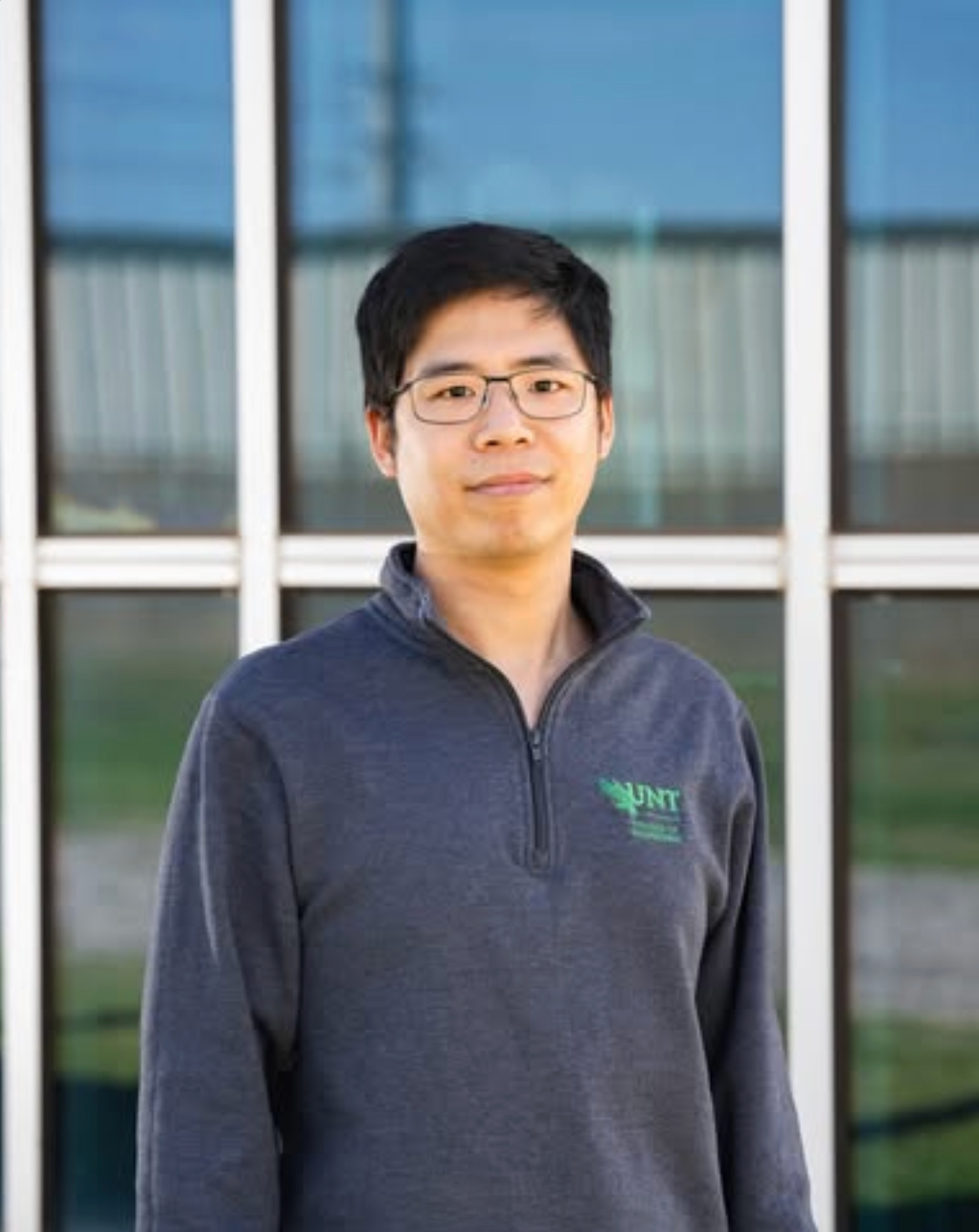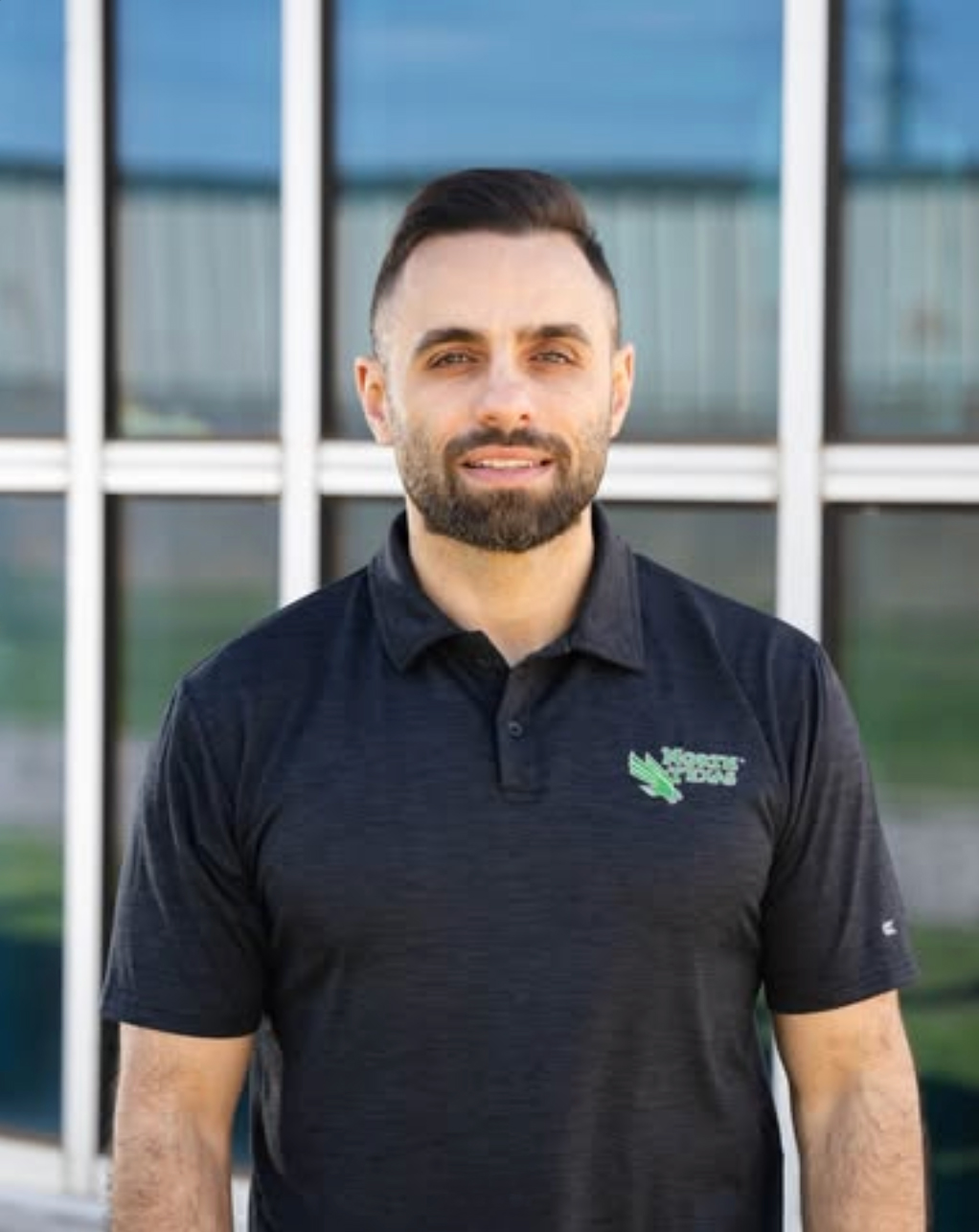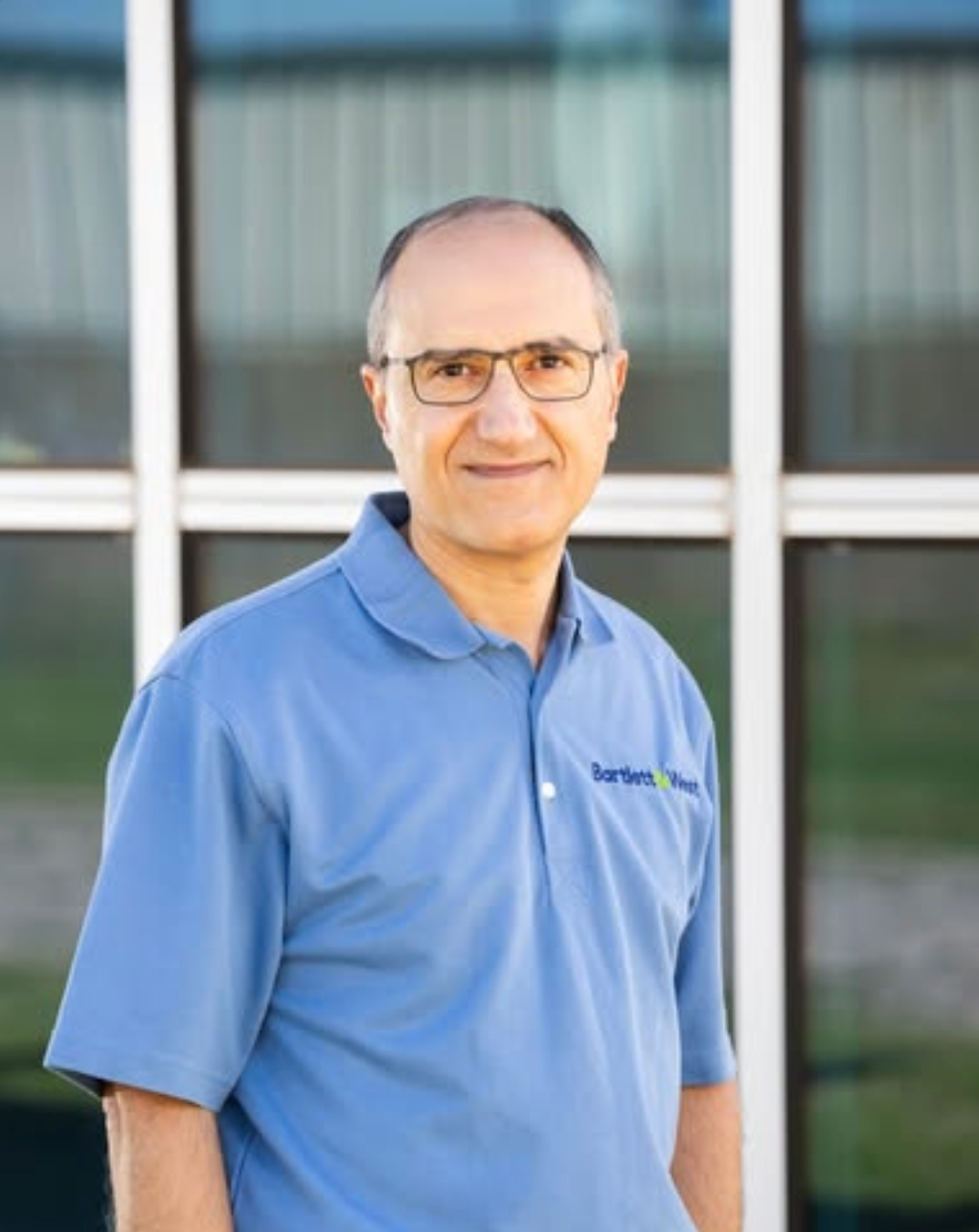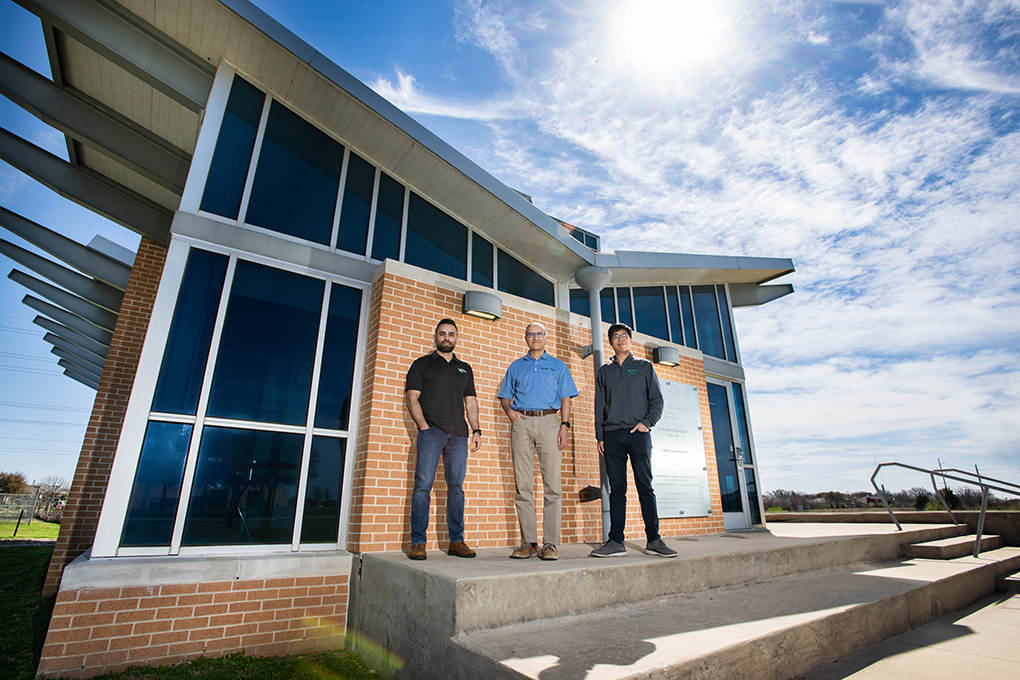Friday, April 4, 2025

(Left to right) UNT's mechanical engineering clinical associate professor Hassan Qandil,
Bartlett & West's senior vice president Naser Abusaad, and UNT's electrical engineering
assistant professor King Man Siu stand in front of The University of North Texas's
Zero Energy Research Lab building
The project studying alternative energy solutions has several collaborators including the Texas Research Alliance, the North Texas Center for Mobility Technologies, city of Denton, North Central Texas Council of Governments and Bartlett & West.
There are nearly 358,000 electric vehicles (EVs) in the Dallas-Fort Worth area according to the Dallas-Fort Worth Clean Cities Coalition. That means there are almost 358,000 large portable batteries moving around the region. Researchers in the University of North Texas (UNT) College of Engineering want to know if those battery resources could provide positive ancillary services back to the community.

Photo: University of North Texas College of Engineering's electrical engineering assistant professor King Man Siu
“Electric vehicle batteries can be considered as one kind of energy storage units among the grid. Most of the time, they are just parked and on standby in our communities,” says electrical engineering assistant professor King Man Siu. “So, let’s see if we can use those units as a buffer for whenever we need power.”
Siu and Hassan Qandil, mechanical engineering clinical associate professor, are studying how EVs could be used on a microgrid scale. As more people move to the North Texas region, there will be more demand on the state’s power grid. EVs could provide a buffer to that demand.
“The ideal form of a microgrid is a neighborhood with a central EV station and solar panels,” Qandil says. “The community can generate and use its own power and can then choose when to buy power from the state grid or when to sell some of their excess power back to the state.”
The EVs also could help a microgrid in the case of a loss of power such as during severe weather.
“Think of the ice storm in 2021,” Qandil says. “There were people who could keep their
fridge going by using their EV’s battery. I want to see how effective it could be
to have multiple EVs feed into a grid.”
Campus Microgrid Model

Photo: UNT's mechanical engineering clinical associate professor Hassan Qandil
Siu and Qandil will use UNT’s campus as its own microgrid for the study. They’ve already worked with UNT Facilities to gather data on energy consumption on campus in buildings like the University Union and Union Circle Garage as well as the service vehicles on campus.
“Through the collected physical data, we’ll be able to find a good balancing point between power demand and vehicle usage,” Siu says. “We also will be able to see how installing a charger affects different kinds of buildings.”
Siu and Qandil have received a total of $336,000 for the project through a combination of funding from UNT’s Division of Research and Innovation, the Texas Research Alliance, the North Texas Center for Mobility Technologies a North Central Texas Council of Governments grant, and a collaboration with Bartlett & West, an engineering, architecture and professional services company.
Bartlett & West is providing half of the funds for the project and is helping with the research. A team of engineers from the company helped Siu and Qandil gather data on current EV grid integration planning strategies. They’ll also help create an integration strategy for UNT’s campus and then adapt that strategy for residential and commercial buildings.

Photo: Bartlett & West's senior vice president Naser Abusaad. He has over 30 years
of experience in transportation planning in Texas. His experience includes major investment
studies, complex alternatives analyses, route feasibility studies, preliminary design,
environmental analyses, and public engagement.
“This research will provide insightful models for more resilient power management to serve the growing needs of Texas,” says Naser Abusaad, senior vice president of Bartlett & West. “Bartlett & West is proud to support this research to help us move forward, together.”
Representatives from the North Central Texas Council of Governments, which assists local governments with regional planning, and the city of Denton are acting as the advisory committee for the project.
“This is one of the most in-depth projects we’ve seen like this,” says Savana Nance,
principal air quality planner in NCTCOG’s Clean Fleet and Energy Program. “UNT itself
is the size of a small town so we think the results from this will easily translate
to helping cities understand how EVs can be a solution to energy needs.”
Building an Electrical Vehicle Grid
For the next step, UNT’s team will do an in-depth analysis of the gathered data. A system level electric vehicle grid integration experimental platform will be developed in the Power Electronics and Renewable Energy Lab at UNT’s Discovery Park to assist research activities on the powertrain system of electric vehicles. The lab is a high-power electrical lab which supports research and education activities on smart grid and sustainable energy.
They’ll also be working with UNT Facilities to install an EV charger in the Zero Energy Lab at UNT’s Discovery Park to evaluate the impact on building energy under EV grid integration. The Zero Energy Lab — the first of its kind in the U.S. when it was built in 2011 — is a separate lab building that runs on renewable energy like solar and wind. It allows students to test sustainable energy solutions. Part of the lab is set up like a small home for researchers to test technology on a residential scale such as energy efficient windows and energy storage systems.
 “My team will build a prototype of an advanced on board charger system to facilitate
the EV energy test at the lab with Dr. Qandil’s team,” Siu says. “We want to identify
the ancillary service boundary on the electric vehicle charging system and performance
tradeoff between electric vehicles battery usage and the building’s power needs.”
“My team will build a prototype of an advanced on board charger system to facilitate
the EV energy test at the lab with Dr. Qandil’s team,” Siu says. “We want to identify
the ancillary service boundary on the electric vehicle charging system and performance
tradeoff between electric vehicles battery usage and the building’s power needs.”
Instead of testing the entire campus, they will use the data to create simulations to see how the whole university would respond to EV energy use.
Also on the team are graduate and undergraduate students from both the mechanical and electrical engineering departments as well as three students from UNT’s Texas Academy of Mathematics and Science.
“It’s exciting to work on this collaborative research with multiple departments. It gives our students the opportunity to work on a project that involves other kinds of engineers,” Qandil says.
UNT researchers are expected to work on the project over the next year. Once complete, the team will share their findings with the city of Denton and NCTCOG to use for future transportation planning.
“We are seeing a huge increase in EV usage right now,” Siu says. “That means more demand on the energy grid. We want to find a solution that benefits the user, the community and the grid itself.”
From UNT News – Research by Amanda Lyons